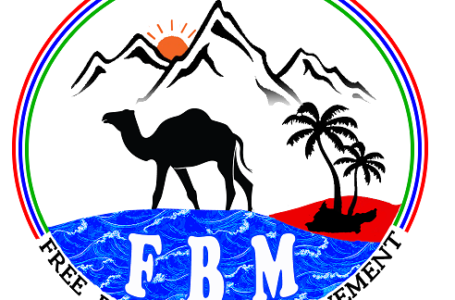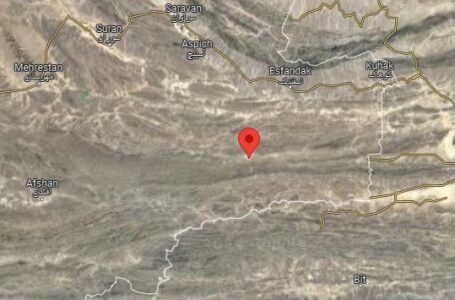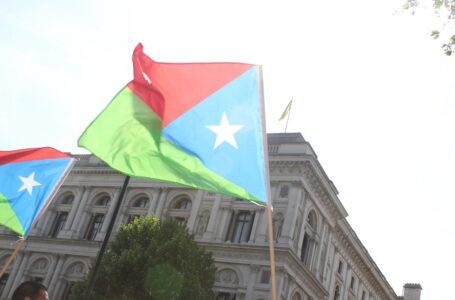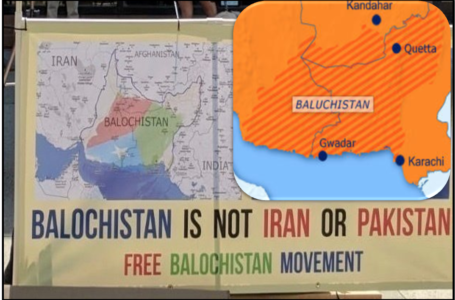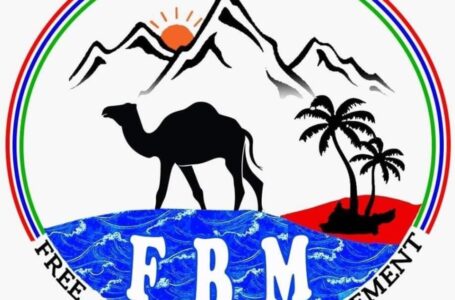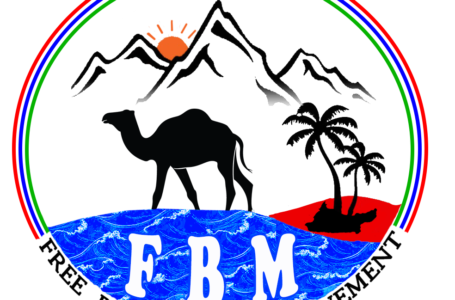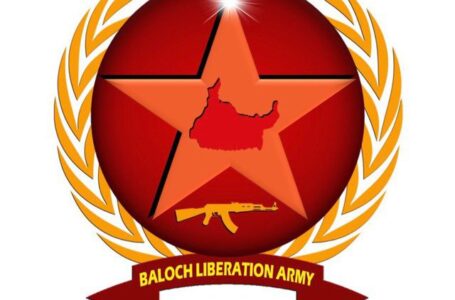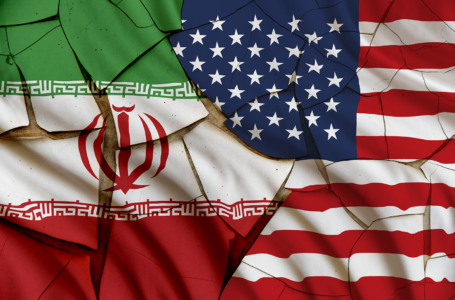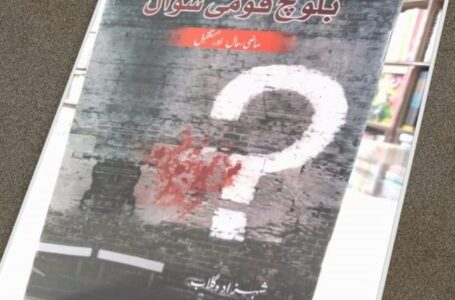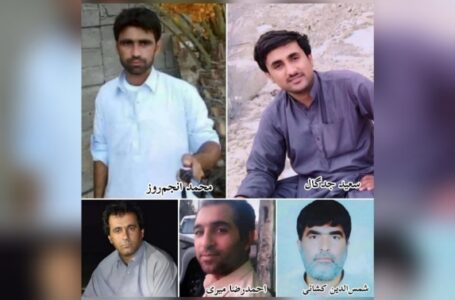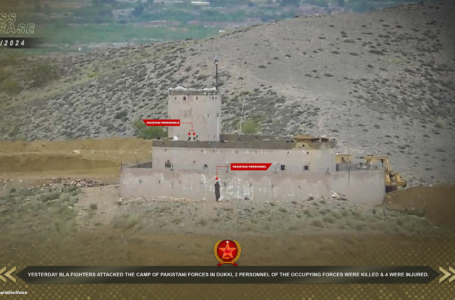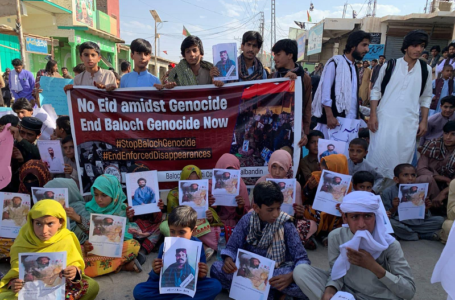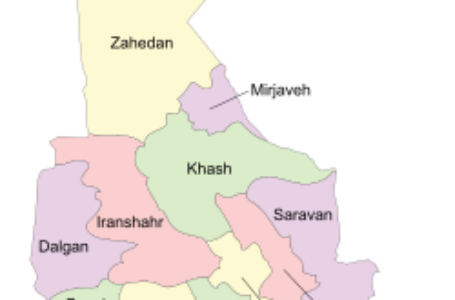Foreign countries should refrain from becoming Pakistan’s partner in Baloch Genocide: FBM
Pakistan’s Macabre policy of “kill and Dump” Abroad
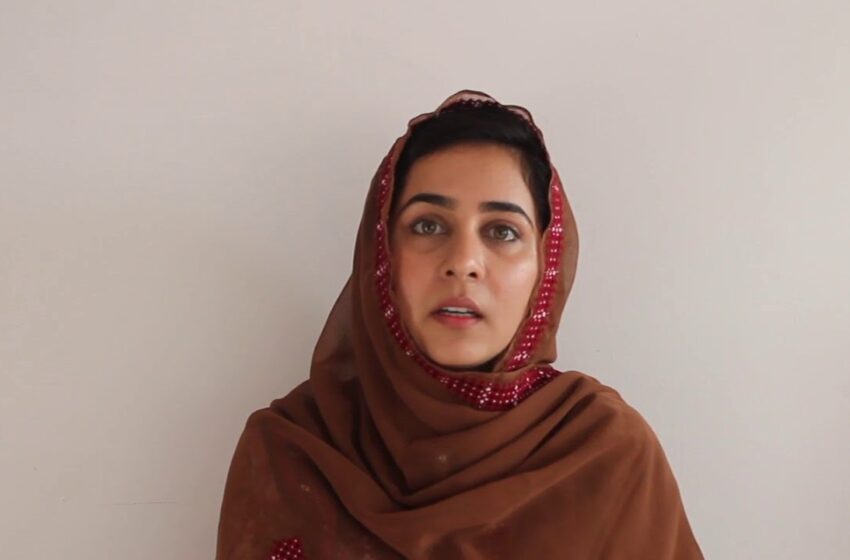
By Dr Shahzavar Karimzadi
Karima Baloch, a well-known Baloch human rights and political activist went missing on Sunday 20 December 2020 in Toronto, Canada. She was last seen at about 3 pm on that day. Her body was found the next day, Monday 21 December. Karima was a gifted and exceptionally committed individual. She was the most influential Baloch woman political leader in the contemporary history of Balochistan. Karima grew up at the most difficult time in Baloch history. Her struggle was for freedom, equality, democracy, and justice. From an early age, she was drawn to a battle of right and wrong, freedom or subjugation. She chose the path of right and freedom and bravely defended it. Karima was a former chairperson of Baloch Students Organisation – Azad. The impact of her activities was such that her name was on the 2016 BBC list of 100 most influential women in the world for her work on human rights and gender equality.
What happened to Karima Baloch is the extension of Pakistan’s dirty “kill and dump” policy from occupied Balochistan to abroad against Baloch dissidents who have taken asylum in democratic nations or have escaped into the neighbouring countries. On the same day that Karima went missing, two Baloch dissidents, Gul Bahar Bugti and his son Murad Ali Bugti were shot dead by Pakistani agents in Kandahar, Afghanistan. In the same year, on 2 March 2020, Sajid Hussain Baloch a journalist and the chief editor of the Balochistan Times, went missing in Sweden. He was writings about violations of human rights by Pakistani forces in Balochistan and about the forced disappearances. The Swedish police discovered Hussain Baloch’s body on Friday 23 April outside Uppsala in the Fyris River. On 10 January 2008, the body of Arif Barakzai was found in Oslo, Noway. Arif was a member of BSO with high scholarly and political leadership potential. These individuals were exceptional strong personalities. They were very well-informed, highly committed to human rights and freedom and independence for Balochistan.
The policy of “kill and dump” is not a new occurrence in Balochistan. This gruesome policy is the invention of the Islamo-fascist states of Pakistan and Iran that they have been using it extensively in different parts of Balochistan under their occupation. There is no precedent of such policy in Balochistan before the colonization of Balochistan by these fake states. The age range of Baloch political and human rights activists that have fallen the victims of Pakistan state’s “kill and dump” policy in Balochistan ranges from 12 to 85 years. This policy has affected all walks of life and social groups in Balochistan.
The list of Baloch victims of the Pakistani army’s “Kill and Dump” policy in eastern occupied Balochistan runs into thousands. Here we only provide a very short list for only five years to demonstrate the scale of the tragedy under the colonial rule of Punjabi Muslims. Among the list of children abducted and their bodies being discovered later are
- 13 years old Majeed Zehri Baloch. He was abducted on 18 October 2010 and his body was discovered on 24 October 2010.
- Waheed Balaach Baloch, 14 years old, was abducted on 8 August 2011 and his body was discovered on 9 October 2011.
- Mir Khan Marri, 15 years old, was abducted on 2 February 2011 and his body was discovered on 7 February.
- Arafat Baloch, 17 years, was abducted on 23 September 2011 and his body was discovered on 6 October 2011.
- Hamid Nasir Baloch, 18 years, was abducted on 12 August 2011 and his body was discovered on 18 August 2011.
The largest number of Pakistan’s state policy of “kill and dump” in Balochistan are Baloch students. Kamber Chaker and Ilyas Nizar were two of the leading Baloch students. Kambar was abducted on 26 November 2010 and Ilyas on 22 December 2010. The bodies of these students were found on 5 January 2011. Baloch journalists were another target of this policy. Lala Hameed Baloch was abducted on 25 October 2010 and his body was recovered on 18 November 2010. Zarif Fara Baloch was abducted on 21 April 2011; his body was recovered on 25 April 2011. Mohammad Khan Marri was abducted on 11 April 2012 and his body was recovered on 28 May 2012. Javid Nasser Rind was kidnapped on 11 September and his body was discovered on 5 November 2011. Khan Mohammed Marri was kidnapped on 11 April 2012 and his body was found o 28 May 2012.
Waheed Qambarani was among many dedicated Baloch teachers who were abducted on 7 October 2010 and his body was found on 1 December 2010. In the same way, Ali Jan Saqib was one among many Baloch popular singers who was abducted on 12 January 2011 and his body was discovered on 31 January 2011. Naseer Kamalan was one among many poets who were abducted on 5 November 2010 and his body was discovered on 17 January 2011.
There are the names of many much respected elderly Baloch who became the victims of this policy. Shadi Khan Marri, 80 years old, was abducted on 23 September 2010 and his body was discovered on 26 December 2010. Haji Jan Mohammad, 78 years old, was another much respected elderly Baloch who was abducted on 12 February 2012 and his body was discovered on 14 February 2012.
Among leading Baloch political leaders who were abducted and their bodies were found in different parts of Eastern occupied Balochistan we have Ghulam Mohammad Baloch, Lal Munir Baloch, and Sher Mohammad Baloch. These three political leaders were kidnapped at the same time on 3 April 2009 and their bodies were discovered on 9 April 2009. Rasool Baksh Mengal, another leading political leader, was abducted on 23 August 2009 and his body was found on 30 August 2009. This is not a secret policy of Panjabi Muslim occupier of eastern Balochistan.
Even the Supreme Court of Pakistan has admitted that IGFC and ISI are responsible for the abduction and disappearance of Baloch political and human rights workers (www.dawn.com 1061888).
What is Pakistan?
Baloch is a nation and Pakistan is not. But Balochistan is under illegal occupation of Pakistan. This amounts to a nation being hijacked by crooks and criminals. Punjabi rulers of Balochistan are these crooks and criminals. To make matter worse than common crooks and criminals, Punjabi rulers of Balochistan have invented their version of Islam and use it to justify their heinous crimes. This is the root cause of the problem in Balochistan under the occupation of Balochistan. It is the islamo-fascist apparatus that has murdered Karima Baloch. Unless one gets this crucial point about the death-trap of occupying states, one will not understand the nature of this fake state in the name of Pakistan. This artificial criminal state was an invention of a dying Empire. The British forged it at the end of the Second World War. Indeed, Pakistan is the most toxic legacy of the British Empire. Both the left and right in Britain are guilty of creating this Frankenstein state.
A brief history of this colonial geopolitical structure would be enough for any sound mind to deplore the entire scheme forever.
But first, what is Pakistan, how and why it came into being? The term was coined in 1933 by Chaudhry Rahmat Ali (1897-1951) a fundamentalist Indian Muslim student in Cambridge. Inspired by the rise of fascism in Europe, Mr. Chaudhary coined the term to heighten the religious divide between Muslims and non-Muslim in India. It is worth reminding the readers at this juncture that after the Turkish Ghaznavid conquest of India in the fourteenth century many Indians converted to Islam. The main reason for conversion to Islam was the Muslims under Ghaznavid colonial rule in India were exempt from paying tax.
The acronym ‘Pakistan’ was selected with a clear purpose. Pakistan literally means the land of the ‘clean nation.’ It was selected intentionally in reverse to the designate, Hindustan (India), the land of the Hindu nation. To Mr. Chaudhry and other fundamentalists, Indian Muslims Hindus were held as being ‘Najis’ (filthy) and Muslims as ‘Pak’ (clean). In Pakistan’s formal curriculum and school textbooks this how they describe Hindus as “unclean” and “inferior” to Muslims.
Trade and the British Colonization of India
The East India Company began trading with India in 1600. This trading relation, in the end, resulted in the complete colonization of India by 1858. The religious divide was the most deadly instrument of the British policy of divide and rule. This was implemented most effectively in India after 1857 Indian revolted against the British colonial rule. After crashing the Indian mutiny in 1857, the British turned to Indian Muslims to safeguard their colonial rule in India. The British Raj army was a military force of about 1.2 million by the end of the First World War. About 355,000 of them were recruited from the Indian Punjab province. During the Second World War, this number was increased to 2.5 million. At least one-third of them were Indian Muslims, mostly recruited from the province of Punjab.
The time came. The British conceded their defeat in India. The old empire did not want to lose all of India. Winston Churchill, the holy father of the expiring empire, called for the division of India into “Pakistan, Hindustan, Pricestan” and to “keep a bit of India.” The entire British establishment, right and left, went with this plan. Cyril Radcliffe, a Welsh lawyer, was sent to India to secure a bit of India for Britain. He arrived in India on 8 July 1947 and was given about five weeks to divide India. However, it only took him a few minutes to draw the lines. He divided two Indian provinces of Bengal and Punjab. The East Bengal became East Pakistan and the West Punjab, West Pakistan but the two sides were about 1,000 miles apart. The population of East Bengal then was about 44 million and West Punjab about 20 million. From the very day of the partition of India, Pakistan was the Punjabi Muslim Raj army and bureaucracy. This comprised about 30% of the British Raj army. This 30% British Raj army from west Punjab and their family associates practically became what Pakistan is today.
The British had been working on dividing the Indians since the 1857 Indian mutiny. They continuously supported a section of Indian Muslims against the rest of the Indian population. The first Indian Muslim political party, the All-India Muslim League, was established by the British on 30 December 1906 in Dhaka. Its first article reads “to promote among Mussalmans [Muslims] of India, feelings of loyalty to the British government.” It was this party that the British colonial rulers used to divide the Indians from Indians and the Indian Muslims from Indian Muslims. During the division in 1947, up to 2 million Indians perished and about 15 million of them were displaced.
Pakistan – the First British Islamic State
In effect, the British created the first Islamic fundamentalist state. A baseless state that is Indian in origin. In the act of self-denial, this fake state employs any violent means, religious absurdities, and deception to hide its true reality. As soon as the British divided the Indian provinces of Punjab and Bengal, the newly created state of Pakistan has engulfed Sindh and the Pashtun area. The latter area was annexed to the British Raj in 1893 after the ‘Durand Line’ was drawn. The renowned Sindhi leader, Ghulam Murtaza Syed who took part in the creation of Pakistan spent over 30 years in prison in opposing Pakistan. Under the Punjabi army colonial rule, Sindh has been totally ruined. In the case of Pashtuns, Afghans have never accepted the Durand line and opposed the admission of Pakistan soon after its creation to the UN in September 1947.
Abdul Ghaffar Khan, the Pashtun leader who spent many years in the British Raj prisons for his opposition to the Durand Line – after partition, he spent about 15 years in Pakistani jails. In his autobiography, he compared living under the colonial rule of the British Empire and the colonial rule of the Punjabi Muslims. He wrote (1969): “The British had never looted our homes, but the Islamic Government of Pakistan did. The British had never stopped us from holding public meetings or publishing newspapers, but the Islamic Government of Pakistan did both. The British had never treated the Pakhtun women disrespectfully, but the Islamic government of Pakistan did.”
Baloch Independence in 1947
The Baloch in Eastern Balochistan regained their independence from Britain, in 1947. This news was reported by the New York Times on 12 August 1947. On 27 March 1948, the Panjabi army of the theocratic state of Pakistan invaded Balochistan and annexed it to Pakistan. From the day of invasion to the present day, Baloch has firmly resisted Pakistan’s occupation of Balochistan. Pakistan so far has carried out five major military operations in Baluchistan; from 1948, 1958, 1962, 1973-74, and 2000 to the present day. In the 1973-77 conflict, only about 15,000 Pakistani mercenaries and about 25,000 Baloch were killed and many thousands of Baloch were displaced and disappeared. Since the year 2000, as a result of Pakistan’s army macabre ‘kill and dump’ policy – many thousands of Baloch political and human rights activists are reported to have been disappeared.
The relatives of the state-enforced disappeared Baloch, mostly Baloch women and children walked over 2,000 km from Quetta, the capital city of eastern Balochistan to Islamabad, the capital city of Pakistan for the recovery of Baloch missing persons. This long march started in October 2013 and ended in February 2014. While, the long march for Baloch missing person on its way, on 17 January 2014, three mass graves of Baloch activists in Tootak, Khuzdar were discovered. Over a million Baloch have been internally displaced or sought sanctuary in another country. All-natural resources of Balochistan are under the control of the Panjabi army. Pakistan also tested its nuclear bombs in the Koh Kambaran ranges and the Chaghai hills in Balochistan on 28 and 30 May 1998. Balochistan under rulers of the Punjabi Islamic cult has been reduced to one of the most deprived and poverty-stricken regions of the world.
It was less than a year after the partition of India that the battle between two parts of Pakistan, East Bengal, and West Punjab, had started. M. A. Jinnah in 1948 declared that “Urdu and only Urdu” should be the national language of Pakistan. Urdu was the mother language of only 4% of the population on both sides of Pakistan. Bengalis protested against it and on 21 February 1952 Panjabi army attacked Bengali students and killed five of them. In 1999, UNESCO declared 21 February in the memory of the victims as International Mother Language Day. The battle between East Bengal and West Panjab reached its turning point in the 1971 general elections. The East Bengal (East Pakistan) won the election. Out of a total of 300 seats, the Awami League in East Pakistan won 167 seats, 56% of the total votes, the absolute majority whereas West Punjab won 86 seats. With only 29% of the total votes, the Punjabi establishment prevented the Bengalis to form the government. General Ayub Khan, the ruler of Pakistan in 1969 described Bengalis as subhuman who came from the “downtrodden races.”
His successor, General Yahya Khan ordered the killing of three million Bengalis to teach them a lesson and make “the rest” “eat out of [their] hand.” Subsequently, just in 267 days in 1971, the Panjabi army killed 1,247,000 Bengalis. Forty million Bengalis were displaced, ten million went to India and the rest were displaced internally. The Panjabi army of West Pakistan set up “rape camps” throughout of East Bengal. According to S. Brownmiller, an American journalist, Panjabi soldiers raped up to 400,000 Bengali women within this short time. East Bengal became independent on 26 March 1971.
Boundless Savagery and the Panjab Islamic Cult
The Panjabi Islamic cult has no mercy even to its own sort. It dumped M. A. Jinnah the founder of Pakistan. Jinnah was abandoned and died in despair in 1948. Choudhry Rahmat Ali, the inventor of the term Pakistan, left England for Pakistan in April 1948. Liaquat Ali Khan (1895-1951), the first prime minister of Pakistan, confiscated all his belongings and threw him out the country in October 1948. Choudhry died destitute on 3 February 1951 in Cambridge. His body was discovered a few days after his death. The expenses for his burial were paid by his British colleagues.
On 16 October 1951, Liaquat Ali Khan was shot dead. From 1948, the year of creation of the state of Pakistan, to the mid-1950s Pakistan replaced seven prime ministers. From 23 March 1956 when Iskander Mirza (1899-1969) became the head of the state, Pakistan has effectively been ruled by the army. The Economist on 11 October 1958 described the state of Pakistan as fluctuating between -“the grotesque and macabre.”
Most prime ministers of Pakistan have been either dismissed or killed since its creation in 1947. Zulfkar Ali Bhutto was hanged by Zia-ul-Haq on 4 April 1979 – by his former chief of the army. Zia was killed in a plane crash on 17 August 1988. Benazir Bhutto was assassinated by the command of her own former army on 27 December 2007.
Pakistan has been the epicentre of most global Islamic terrorist groups. In the 1970s, the jihadist groups were organized to destroy the East Bengal movement. Naseerullah Barbar, the former interior minister of Pakistan was the mastermind behind Afghan Taliban groups and Kashmiri Jihadist groups. Also, there are over fifty Islamist terrorist groups including the Hizb-ul-Mujahideen, Lashkar-e-Taiba, Jaish-e-Mohammad, the Haqqani network, Taliban, and Al Qaeda that operate under the protection of the Pakistani security forces. Pakistan has initiated several wars with India and has regularly been dispatching their jihadist groups to India to commit their terrorist acts.
The Panjabi army of Pakistan provided sanctuary to Osama bin Laden, the head of Al-Qaida. He was found and killed in his compound in Abbottabad, Panjab on 2 May 2011. Almost, all terrorist attacks in Afghanistan are organized by the Punjabi army of Pakistan. Besides, most of the western soldiers that have been killed and injured in Afghanistan are also masterminded by the Pakistan army.
Pakistan means the Punjabi army. Punjabi Muslims like the rest of other non-Muslims Panjabis are Indian. So the whole idea of Pakistan as a separate nation is completely groundless. To deceive the world the Panjabi Muslims of India hide under the term Pakistan, which is not any national identity. In maintaining this fraudulent identity they have resorted to any forms of crime and deception imaginable.
Simply, they have fooled the world as being a victim of the British Empire. The fact is they were the most subservient Indians of the British Empire. Under this false claim of victimhood, they have committed the most gruesome crimes imaginable in about seven decades of their existence. There is not any form of deception or lies or religious fabrication that during this period that they have not employed to preserve this fraudulent political entity. There is not any form of violence that they have not used to eliminate their opponents. There is not any more skilful state beggar than the Punjabi Muslim rulers of Pakistan. They have devised begging bowls in the name of Islam, freedom, socialism, communism, anti-communism, development, equality and the list goes on just enrich themselves. For this reason, they do not want the world to know who they are.
Moreover, they know without Balochistan under their colonial control Pakistan will cease to exist. Karima Baloch was a bright light in this long tunnel of darkness with a great potential of becoming a shining Sun that could reveal the crimes of the Punjabi army of Pakistan in Balochistan to the world. For this reason, the deep state of Pakistan has murdered these strong, brave, committed, and progressive Baloch men and women.
The writer is Vice President of Free Balochistan Movement

